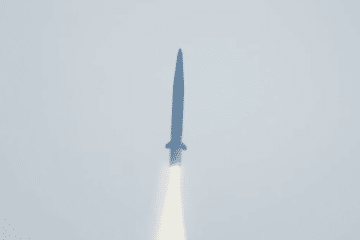LIG Nex1 announced on April 4th that it was selected as a preferred bidder by the DAPA (Defense Acquisition Program Administration) for the system development of the lightweight (LW) torpedo-2 (Blue Shark), which will be placed on surface ships to improve the capability of neutralizing and destroying enemy submarines. A series of negotiations will lead to the estimated 150 billion KRW (~$123 million) of the contract by 2029.
The lightweight torpedo-2 will reportedly be capable of quickly responding to enemies’ improving decoys and promptly striking a target from a farther distance with precision. The performance improvement adjusting to the local underwater environment and precision strike capability is expected to enable more efficient naval operations, enhancing the survivability of the ROK Navy’s ships.
The system development project includes several other SMEs (small and medium-sized enterprises). Local reports speculate that the phase of mass production would be able to contribute to strengthening the competitiveness of the Korean defense technology, due to the underwater weapon-related synergetic effects.
LIG Nex1 plans to put more effort into the market development of other underwater weapons and unmanned technology so that the company could cooperate further with participating SMEs.
“We will strengthen the partnership with involved parties for the light torpedo-2 to protect the water of South Korea, and do our best to develop high-quality weapons.”
Mr. Ji-chan Kim, The Chief Executive of LIG Nex1
About Blue Shark LW Torpedo

The K745 Blue Shark is a light anti-submarine torpedo developed for the Republic of Korea Navy in 2004. The Blue Shark torpedo can be deployed from surface ships, ASW helicopters and maritime patrol aircraft.
According to the company brochure, Blue Shark is a precision-striking weapon that provides target tracking by homing from the moment of launch in anti-ship operations.
The torpedo can be operated in two modes: One is the direct search mode, in which the Blue Shark is launched from a surface ship or dropped from a helicopter and strikes the target in a circular and spiral pattern from the searched point; the other is the non-direct search mode, in which the target is struck by activating active search after diving into a safe launch area while moving by helicopter or maritime patrol aircraft. The system can be installed and maintained on a new ship (launcher, tube) and can be included in a warship’s export package.
Key Data:
- Mass: 280 kg
- Length: 2.7 m
- Width: 0.32 m
- Operational range: 19 km
- Maximum speed: 45+ knots
- Guidance system: Acoustic






